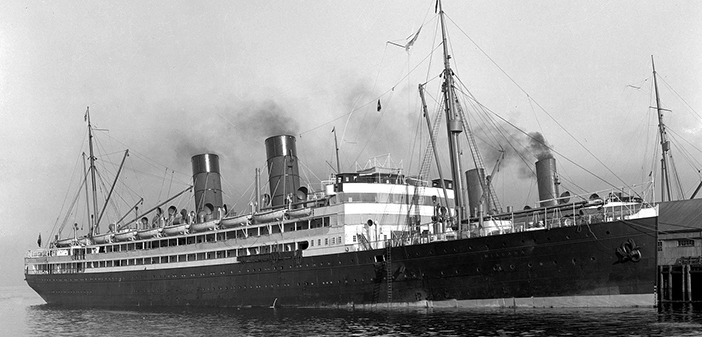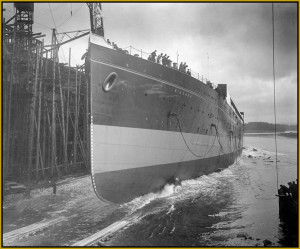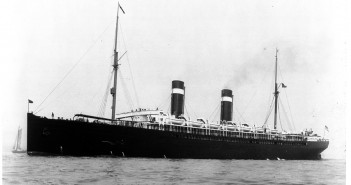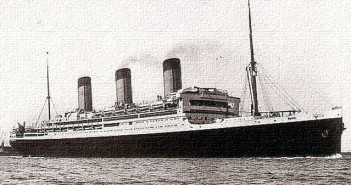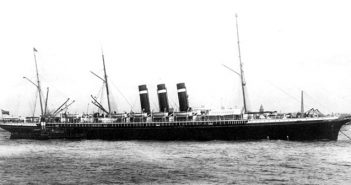Union Steam Ship Co.’s Niagara (1912) was launched on 17 August 1912 at John Brown & Co., Clydebank. The sturdy liner, which looked bigger than she really was (13,415 GRT; 524.7 feet long), spent most of her career sailing uneventfully s between ports in the Pacific, including Sydney, Auckland, Fiji, Honolulu and Vancouver.
On 19 June 1940, while still in civilian service, Niagara struck mines laid by the German raider HSK Orion in Hauraki Gulf, New Zealand. She quickly sank, taking with her 590 gold bars owned by the Bank of England. The bullion was consigned to the US for the purchase of desperately needed war materials for the defense of Britain during the conflict’s darkest months.
With the war still underway, on 15 December 1940, a salvage vessel began searching for the Niagara wreck (by dragging an anchor across a seabed that was also an active minefield). After two months of scraping the sea bottom, the sunken liner was found resting in 394 feet of water, far too deep for conventional drivers of the time to reach. Nonetheless, using only rudimentary salvage gear, including a viewing/diving chamber and a grab mechanism lowered from the surface, the recovery team began the almost impossible task of retrieving the gold for the British government.
The salvers were eventually able to blast a hole in Niagara‘s hull and successfully recover 555 gold bars—over eight tons of the precious metal. In 1953, an additional 30 gold bars were retrieved.
Five gold bars are said to remain somewhere within the wreck. Good luck getting to them.

Did you like this article? When you buy anything through the link below, Amazon will contribute a small amount to Ocean Liners Magazine at no extra cost to you.
Shop Now

